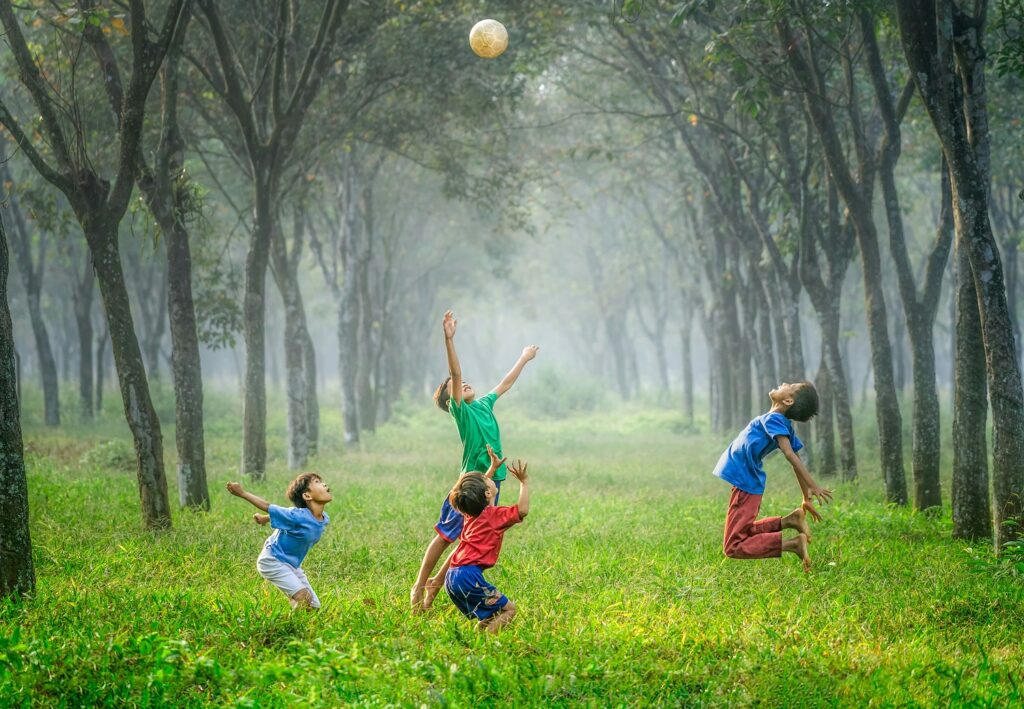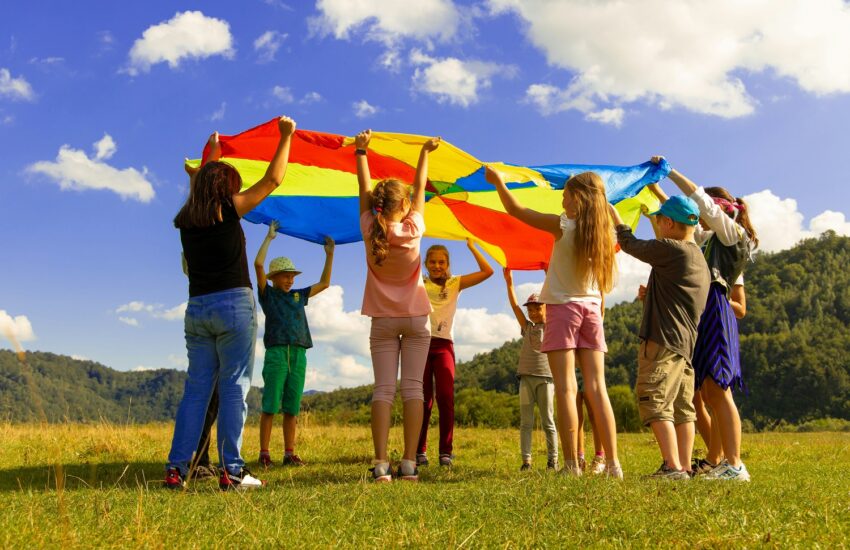Physical activity is crucial for children as it plays a fundamental role in their growth, development, and overall well-being. Engaging in regular physical activities helps children build strong bones and muscles, develop motor skills, enhance cognitive function, and establish healthy habits that can last a lifetime. In this comprehensive exploration, Mohit Tandon Illinois will delve into the 15 essential physical activities recommended for children, considering various factors such as age-appropriateness, developmental milestones, safety considerations, and the benefits of each activity.

1. Active Play:
Firstly, Active play is a broad category encompassing various forms of physical activity that encourage movement, exploration, and creativity. It includes activities such as running, jumping, climbing, and playing on playground equipment. Active play is essential for developing gross motor skills, coordination, and strength in children of all ages. Parents and caregivers can facilitate active play by providing a safe and stimulating environment with access to age-appropriate equipment and toys.
2. Outdoor Exploration:
Outdoor exploration allows children to engage with nature, explore their surroundings, and experience sensory stimulation. Activities such as walking, hiking, and exploring natural environments promote physical activity while fostering an appreciation for the outdoors. Parents can encourage outdoor exploration by taking children on nature walks, visiting parks, and participating in outdoor activities such as scavenger hunts and nature-based art projects.
3. Sports Participation:
Introducing children to sports at a young age helps develop fundamental movement skills, coordination, and teamwork abilities. Age-appropriate sports such as soccer, basketball, gymnastics, and swimming provide opportunities for children to learn new skills, interact with peers, and stay physically active. Parents should ensure that sports activities are adapted to children’s developmental abilities and interests, emphasizing fun and skill development rather than competition.
4. Swimming:
Swimming is an excellent form of physical activity for children that promotes cardiovascular fitness, strength, and coordination. Swimming lessons or supervised water play sessions help children develop water safety skills while enjoying the benefits of aquatic exercise. Parents should provide appropriate supervision and ensure that children are familiar with water safety rules and practices when engaging in swimming activities.
5. Active Games:
Active games such as tag, hide-and-seek, and relay races are fun ways to encourage physical activity and social interaction among children. These games promote cardiovascular fitness, agility, and coordination while providing opportunities for children to practice teamwork and cooperation. Parents can organize active game sessions in outdoor or indoor settings, adapting the rules and activities to suit children’s ages and abilities.
6. Cycling:
Cycling is a popular and enjoyable activity that promotes cardiovascular fitness, leg strength, and balance in children. Riding a tricycle or bicycle allows children to explore their neighborhood, develop spatial awareness, and improve their motor skills. Parents should ensure that children wear appropriate safety gear, such as helmets and knee pads, and supervise cycling activities to prevent accidents and injuries.
7. Dancing:
Dancing is a fun and expressive form of physical activity that helps children improve coordination, rhythm, and flexibility. Dance classes or dance-based games and activities allow children to learn new movements, express themselves creatively, and stay physically active. Parents can encourage dancing at home by playing music and dancing together with their children, creating a positive and supportive environment for physical activity.
8. Yoga and Stretching:
Yoga and stretching activities promote flexibility, balance, and body awareness in children. Simple yoga poses and stretching exercises help children develop motor skills, improve posture, and relieve tension. Parents can incorporate yoga and stretching into children’s daily routines or bedtime rituals to promote relaxation and enhance physical well-being.
9. Playground Play:
Playground play offers children opportunities to engage in a variety of physical activities, including climbing, swinging, sliding, and balancing. Playground equipment helps children develop strength, coordination, and spatial awareness while having fun and socializing with peers. Parents should supervise children at the playground to ensure safety and provide guidance on using equipment properly to prevent accidents and injuries.
10. Ball Games:
Ball games such as soccer, basketball, and volleyball promote hand-eye coordination, agility, and teamwork skills in children. Playing ball games with peers or family members encourages social interaction and physical activity while developing fundamental motor skills. Parents can organize informal ball games in local parks or playgrounds. This provides opportunities for children to practice skills and enjoy friendly competition in a supportive environment.
11. Martial Arts:
Martial arts classes offer children opportunities to learn self-defense techniques, improve fitness levels, and develop discipline and focus. This arts training promotes physical fitness, flexibility, and coordination while teaching valuable life skills such as respect, perseverance, and self-control. Parents should choose age-appropriate martial arts programs and ensure that children receive proper instruction and supervision from qualified instructors.
12. Obstacle Courses:
Obstacle courses are fun and challenging activities that promote physical fitness, agility, and problem-solving skills in children. Creating obstacle courses using household items or playground equipment encourages children to navigate obstacles, climb, jump, and crawl while developing motor skills and coordination. Parents can design obstacle courses tailored to children’s ages and abilities, incorporating a variety of activities and challenges to keep them engaged and motivated.
13. Jumping Rope:
Jumping rope is a simple yet effective form of cardiovascular exercise that improves coordination, agility, and endurance in children. It can be done individually or in groups, making it a versatile activity for children of all ages and skill levels. Parents should ensure that children have access to a suitable jump rope and provide guidance on proper jumping techniques to prevent injuries.
14. Climbing:
Climbing activities such as climbing walls, trees, or playground structures help children develop upper body strength, coordination, and spatial awareness. Climbing challenges children to use their muscles and problem-solving skills while building confidence and self-esteem. Parents should supervise climbing activities to ensure safety and provide guidance on using equipment properly to prevent accidents and injuries.
15. Balancing Activities:
Balancing activities such as walking on a balance beam, balancing on one foot, or using balance boards help children improve core strength, stability, and coordination. These activities challenge children to control their movements and maintain equilibrium while developing motor skills and body awareness. Parents can incorporate balancing activities into children’s playtime or outdoor exploration. This provides opportunities for them to practice and improve their balance skills in a safe and supportive environment.
In conclusion, incorporating a variety of physical activities into children’s daily routines is essential for promoting their physical health, development, and overall well-being. Accordingly Mohit Tandon, By encouraging active play, outdoor exploration, sports participation, swimming, active games, cycling, dancing, yoga and stretching, playground play, ball games, martial arts, obstacle courses, jumping rope, climbing, and balancing activities, parents and caregivers can support children’s physical development and instill a lifelong love of physical activity. Moreover, creating a supportive and encouraging environment that emphasizes fun, safety, and skill development enables children to enjoy the benefits of physical activity while building confidence, resilience, and a healthy lifestyle.
